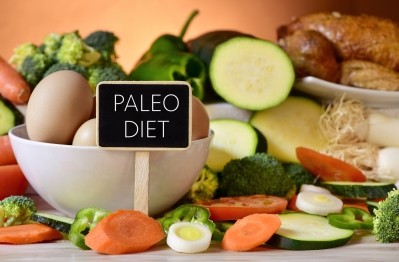Paleo diet linked to faster weight loss, but also lower intake of key micronutrients, study finds

The study, published May 23 in the journal Nutrients, found healthy women randomized to follow a paleo diet, which encourages eating lean meats, most fruits and vegetables, but no grains, dairy, corn, potatoes or legumes, lost 4.3% of their body weight and 3.8% of their waist circumference in four weeks.
Of the 39 women who participated in the study, those who were randomized to follow the Australian Guide to Healthy Eating Diet, which includes a balance of some meat, fruits, vegetable, grains, legumes and dairy among other food groups, lost only 1.6% of their body weight and 1.9% of their waist circumference in the same time period.
These findings align with those of previous research that found women who followed the paleo diet lost 5.3% of body weight and 7.5% in their waist circumference after five weeks, and another study that found a 3.5% reduction in body weight and a 2% drop in waist circumference after three weeks.
Notably, the results of the current study show weight loss in the paleo group was significantly associated with the reduction of energy intake, including that from carbohydrates, and increases in the percentage of daily energy of protein.
Within the AGHE group, the women consumed more energy from carbohydrates and less from saturated fat.
The researchers conclude that this supports the notion that “the reduction in body weight and fat mass found in this study cannot be attributed to the reduction in energy intake alone. This supports previous findings that lower carbohydrate diets are associated with greater losses of fat mass over a short term period.”
Changes in micronutrient consumption
Along with the weight loss in the paleo group came lower intakes of key micronutrients, including lower iodine, sodium and calcium. There also were significant reductions in the intake of thiamin, riboflavin and iodine, as well as less vitamin C, beta-carotene, vitamins A and E, and decreases in folate and iron, according to the study.
Given these changes, the authors suggest future research should look at the longer term impacts of the reduction in calcium intake under the paleo diet.
Despite the changes in weight and nutrient-intake, the study did not find a difference between cardiovascular and metabolic risk factors in the two groups. This, again, supports the need for more long term research, the authors note.
Source: Nutrients
2016, 8(5), 314; doi:10.3390/nu8050314
"Cardiovascular, Metabolic Effects and Dietary Composition of Ad-Libitum Paleolithic vs. Australian Guide to Healthy Eating Diets: A 4-Week Randomised Trial"
Authors: A. Genoni et al.













